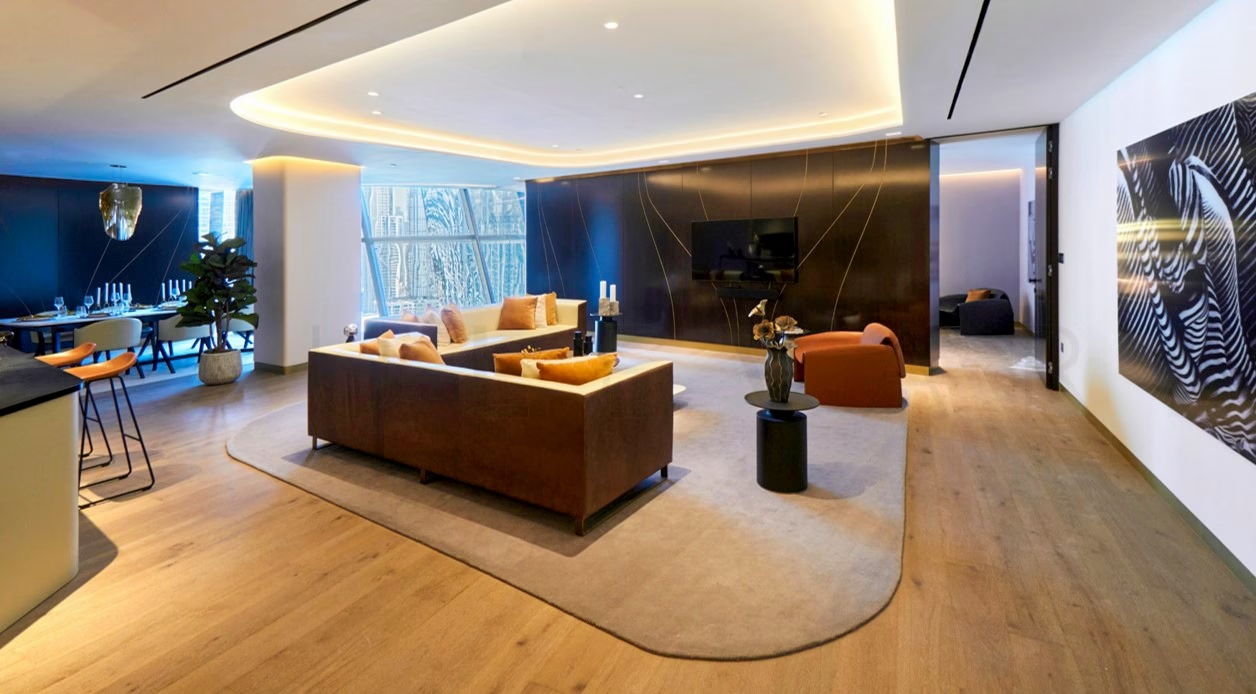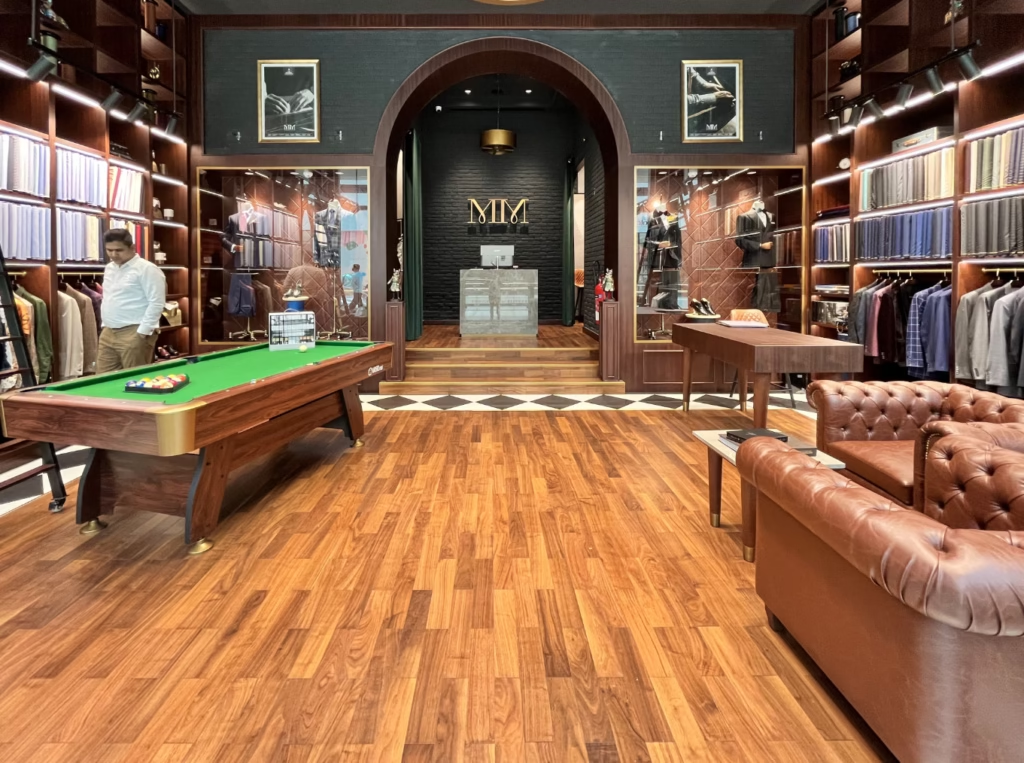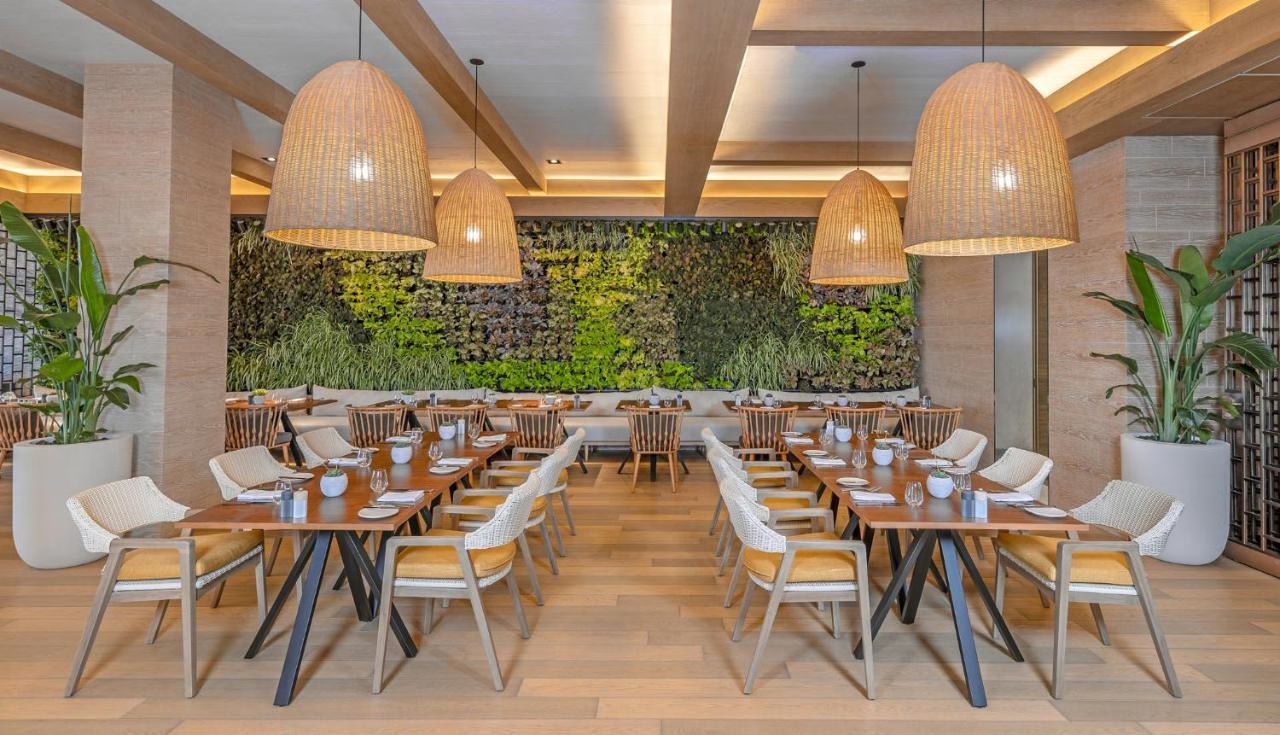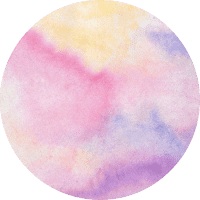A Guide to Wooden Flooring Finishes: Find Your Perfect Match

Choosing the right finish marks the difference between “just a wood floor” and “a natural, stunning centrepiece”.
1. Oil-Based Finishes
These finishes use natural or hardwax oils that absorb into the wood, bringing out its natural beauty and texture. UV-cured oils add extra protection, making the surface more resistant while maintaining the organic feel of an oil-treated floor. MM
Pros
- Enhances natural grain with a warm, matte look
- Penetrates wood for long-lasting protection
- Easy to spot-repair
- Eco-friendly options available
Cons
- Requires regular maintenance (re-oiling)
- Less surface durability than lacquer
- Longer curing time
- More likely to stain if not maintained

2. UV Lacquer Finishes
UV lacquer finishes create a hard, durable surface by curing the coating instantly with ultraviolet light. This results in a tough, glossy layer that protects engineered wood flooring from scratches, stains, and wear, while offering a smooth, polished appearance.
Pros
- Extremely durable and resistant to scratches and stains
- Fast drying and curing time thanks to UV technology
- Provides a smooth, glossy, or satin finish
- Requires less frequent maintenance than oil finishes
Cons
- Surface scratches can be harder to repair
- Can appear less natural compared to oil finishes
- Usually more expensive than traditional finishes

3. Water-Stain + Water-Based Lacquer
Water Stain: Used to enhance or alter the natural color of engineered wood flooring. Water stains penetrate the surface, allowing the grain to show through while adding rich tones without the harsh chemical smell of traditional stains.
Water-Based Lacquer: A clear protective finish applied over the stained wood. It dries quickly, has low VOCs, and provides a smooth, durable surface. This finish resists yellowing over time and is available in various sheens, from matte to semi-gloss.
Water-Based Lacquer: A clear protective finish applied over the stained wood. It dries quickly, has low VOCs, and provides a smooth, durable surface. This finish resists yellowing over time and is available in various sheens, from matte to semi-gloss.
Pros
- Enhances color while keeping natural texture
- Fast-drying, low odor, and low VOCs
- Good protection with a natural look
- Resists yellowing; available in multiple sheens
Cons
- Doesn't penetrate as deeply as oil
- Repairs may need sanding and recoating
- Less durable than UV lacquer

| Finish | Look & Feel | Durability | Maintenance | Repairability | Drying Time / VOCs |
|---|---|---|---|---|---|
| Oil (incl. UV) | Natural, textured | Medium | Re-oiling 3–12 mo | Easy spot oiling | Long / moderate VOCs |
| UV Lacquer | Smooth, glossy/matt | High | Minimal | Difficult (requires sanding) | Instant cure / factory VOC control |
| Water-Stain + Water Lacquer | Even tone, clear | High–Medium | Occasional cleaning | Spot lacquer possible | Fast / low VOCs |
Choosing What's Right for You
- Choose Oil or UV Oil if you love a tactile, natural feel and don't mind occasional maintenance.
- Go with UV Lacquer for homes with kids, pets, or high foot traffic, where durability is key.
- Opt for Water-Stain + Water-Based Lacquer if you want consistent color, quick drying, low odor, and easy care.
The Floorist Has You Covered
At The Floorist, we offer all three finishing options for engineered wood flooring: oil, UV lacquer, and stain with water-based lacquer. Our team will help you choose the right finish based on your needs, including:
- Your lifestyle and level of foot traffic.
- The look and feel you want in your finish.
- Whether you prefer consistent color or natural variation.
From sample selection to installation and ongoing maintenance, our experts handle it all.
Contact The Floorist today for a personalized consultation.
Whether you’re drawn to natural character, need high durability, or prefer a clean, modern aesthetic, we have a flooring solution that’s just right for your space.
 Black & White Wallpaper
Black & White Wallpaper Pastel Wallpaper
Pastel Wallpaper



